Today’s Current Affairs: 20th July 2024 for UPSC IAS exams, State PSC exams, SSC CGL, State SSC, RRB, Railways, Banking Exam & IBPS, etc
Table of Contents
Enemy Property In India:

The Indian government has begun to auction properties classified as ‘enemy properties’.
- Enemy Property are those immovable and moveable assets which were left behind by people who took citizenship of Pakistan and China after leaving India during the partition and post the 1962 and 1965 wars.
- Besides real estate, enemy property may also include bank accounts, shares, gold, and other assets of such individuals.
- The enemy properties are vested with the Custodian of Enemy Property for India (CEPI), an authority created under the Enemy Property Act, 1968.
- The 2017 amendment to the Act (Enemy Property (Amendment and Validation) Act, 2017) stated that the successorsof those who migrated to Pakistan and China ceased to have a claim over the properties left behind in India.
- The amendment ensured that the law of succession does not apply to enemy property, that there cannot be a transfer of any property vested in the custodian by an enemy, or enemy subject, or enemy firm, and that the custodian shall preserve the enemy property till it is disposed of in accordance with the provisions of the Act.
- As per CEPI, there are 13,252 enemy properties in India, valued at over Rs1 lakh crore.
- Most of these properties belong to people who migrated to Pakistan, and over 100 to those who migrated to China.
- Uttar Pradesh (5,982) has the highest number of enemy properties, followed by West Bengal (4,354).
Rwanda : Election
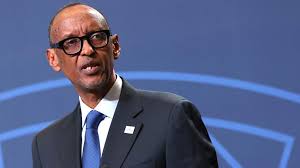
Rwanda’s President Paul Kagame has smashed his own record by winning recent elections with more than 99% of the vote.
- Rwanda is a landlocked countrylocated south of the equator in east-central Africa.
- It is part of the Great Rift Valley region of Africa.
- Often referred to as the “land of a thousand hills”, Rwanda’s landscape is mostly hilly and mountainous.
- It covers an area of 26,338 sq. km.
- Rwanda shares a border with the four nations of Burundi, Tanzania, Uganda, and the Democratic Republic of the Congo.
- Capital: Kigali
- Languages: Kinyarwanda, French, English
- It is one of the continent’s most densely populated, with approximately a thousand people per square mile.
- The Hutu and Tutsi ethnic groups make up most of the country’s population.
- The majority of both groups practice Christianity.
- In 2003, Rwanda adopted a constitution mapping out a presidential system of government.
- Two major African rivers, the Nile and the Congo, flow through Rwanda.
- Other major rivers are Kagera, Nyabarongo, Ruzizi, Luhwa, and Akanyaru.
- 80% of Rwanda’s rivers drain into the Nile through Lake Victoria, while the remaining 20% drain into the Congo via the Rusizi River which also has the lowest elevation in Rwanda at 950 m.
Phlogacanthus Sudhansusekharii : New Plant Species
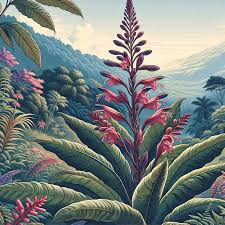
Researchers from the Botanical Survey of India (BSI) recently discovered a new plant species named Phlogacanthus sudhansusekharii, from Itanagar Wildlife Sanctuary in Arunachal Pradesh.
- Phlogacanthus Sudhansusekharii is a newly discovered plant species which belongs to the family ‘Acanthaceae’ and the ‘Phlogacanthus’ genus.
- It was discovered from the Itanagar Wildlife Sanctuary in Papum Pare district, Arunachal Pradesh.
- The species is named to honor Dr. Sudhansu Sekhar Dash, a scientist at the BSI, for his “significant contribution” to plant and ecological research in the Indian Himalayan region.
- The genus ‘Phlogacanthus’ comprises 13 species in India and is spread over mainly the northeastern and eastern Himalayan states.
- Itanagar Wildlife Sanctuary is a protected area located in Naharlagun, near the capital city of Arunachal Pradesh.
Gaia Spacecraft:

Gaia spacecraft has faced and overcome significant challenges in its mission to map over a billion stars in the Milky Way.
- Gaia Spacecraft was launched by the European Space Agency (ESA) in December 2013.
- It is located 1.5 million kilometres from Earth at the second Sun-Earth Lagrange point (L2).
- It monitors each of its target stars about 14 times per year. It is precisely charting their positions, distances, movements, and changes in brightness.
- It is expected to discover hundreds of thousands of new celestial objects, such as extra-solar planets and brown dwarfs, and observe hundreds of thousands of asteroids within our own Solar System
- The mission is also studying more than 1 million distant quasars and providing stringent new tests of Albert Einstein’s General Theory of Relativity.
- It contains two optical telescopes that work with three science instruments to precisely determine the location of stars and their velocities, and to split their light into a spectrum for analysis.
- It is creating an extraordinarily precise three-dimensional map of nearly two billion objects throughout our Galaxy and beyond, mapping their motions, luminosity, temperature and composition.
- This huge stellar census is providing the data needed to tackle an enormous range of important open questions relating to the origin, structure and evolutionary history of our Galaxy.
Khelo India Rising Talent Identification (KIRTI) Program:
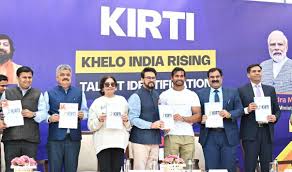
The Government’s ambitious Khelo India Rising Talent Identification (KIRTI) program is set to get a fresh boost under the leadership of the Union Minister for Youth Affairs.
- Khelo India Rising Talent Identification (KIRTI) Program is aimed at school children between nine and 18 years age group.
- The nation-wide scheme will have two main objectives to hunt talent from every nook and corner of the country and
- KIRTI made a solid launch across 50 centres in India. Fifty thousand applicants are being assessed in the first phase across 10 sports, including athletics, boxing, wrestling, hockey, football and wrestling.
- It aims to conduct 20 lakh assessments across the country throughout the FY 2024-25 to identify talent through notified Talent Assessment Centres.
- Its athlete-centric programme is conspicuous by its transparent selection methodology based on Information Technology. Data analytics based on Artificial Intelligence are being used to predict the sporting acumen of an aspiring athlete.
- With its decentralized and pocket-based talent identification approach will help in achieving the twin objectives of the Khelo India Scheme i.e. excellence in sports, and mass participation in sports.
UN Water Convention : Ivory Coast Joined
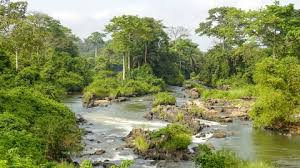
Ivory Coast joined the United Nations Water Convention, becoming the 10th African nation to do so.
- It is also known as the Convention on the Protection and Use of Transboundary Watercourses and International Lakes which was adopted in Helsinki in 1992 and entered into force in 1996.
- It is a unique legally binding instrument promoting the sustainable management of shared water resources, the implementation of the SustainableDevelopment Goals, the prevention of conflicts, and the promotion of peace and regional integration.
- It was originally negotiated as a regional framework for the pan-European region.
- It requires Parties to prevent, control and reduce transboundary impact, use transboundary waters in a reasonable and equitable way and ensure their sustainable management.
- Parties bordering the same transboundary waters have to cooperate by entering into specific agreements and establishing joint bodies.
- As a framework agreement, the Convention does not replace bilateral and multilateral agreements for specific basins or aquifers; instead, it fosters their establishment and implementation, as well as further development.
- It is a powerful tool to promote and operationalize the achievement of the 2030 Agenda for Sustainable Development and its SDGs.
- The United Nations Economic Commission for Europe (UNECE), which services the UN Water Convention.
Foreigners Tribunals:
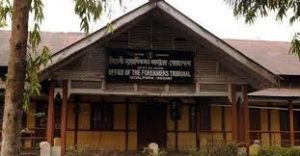
The Assam government asked the Border wing of the State’s police not to forward cases of non-Muslims who entered India illegally before 2014 to the Foreigners Tribunals (FTs).
- Foreigners Tribunals are quasi-judicial bodies formed through the Foreigners (Tribunals) Order of 1964 under Section 3 of the Foreigners’ Act of 1946, to let local authorities in a State refer a person suspected to be a foreigner to tribunals.
- The FTs are currently exclusive to Assam as cases of “illegal immigrants” are dealt with according to the Foreigners’ Act in other States.
- Each FT is headed by a member drawn from judges, advocates, and civil servants with judicial experience.
- The Ministry of Home Affairs told Parliament in 2021 that there are 300 FTs in Assam but the website of the State’s Home and Political Department says that only 100 FTs are currently functioning, beginning with 11 established before the Illegal Migrants (Determination by Tribunals) Act of 1983 was scrapped in 2005.
SEBI : Introduction Of a New Asset Class Or Product Category

The Securities and Exchange Board of India (SEBI) has proposed the introduction of a new asset class or product category.
- This move is aimed at providing investors with a regulated investment product that features higher risk-taking capabilities, while also curbing the proliferation of unregistered and unauthorised investment products.
- The minimum investment threshold under the new asset class has been proposed at Rs 10 lakh per investor.
- SEBI proposes distinct naming for this new asset class to differentiate it from traditional MFs, PMS, Alternative Investment Funds (AIFs), Real Estate Investment Trusts (REITs), and Infrastructure Investment Trusts (INVITs).
- Some of the investment strategies that may be permitted include long-short equity funds and inverse ETF (exchange-traded fund) (funds that are traded on stock exchanges, much like individual stocks).
- Investors may also have an option of systematic plans such as systematic investment plan (SIP), systematic withdrawal plan (SWP) and systematic transfer plan (STP) for investment strategies under the new asset class.
The Voicebox Programme:
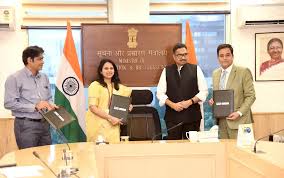
The National Film Development Corporation (NFDC) has joined hands with Netflix India to launch an upskilling program for voice-over artists in India called “The Voicebox”.
- Voicebox Programme will offer Recognition of Prior Learning (RPL) training for voice-over artists focusing on English, Hindi, Marathi, Bengali, Malayalam, Tamil, Telugu and Gujarati languages.
- The program is open to professionals, preferably women, with more than two years of experience in the media and entertainment sector, who are eager to enhance their skills in voice-over.
- It is sponsored by the Netflix Fund for Creative Equity, which has dedicated $100 million a year over five years to setting underrepresented communities up for success in the TV and film industries through programs all around the world.
- As part of the program, structured workshops, which would include training (featuring guest lectures and mentoring sessions), followed by an assessment, will be conducted in seven major cities of India – New Delhi, Mumbai, Kolkata, Ahmedabad, Hyderabad, Chennai, and Kochi.
- Each batch would accommodate up to 30 candidates, with 210 participants selected through preliminary screening. At least 50% of the participants will be women.
- Pearl Academy, India’s leading design institute will join as a Training Partner for this program.
- Seven top participants from every batch will be chosen to contribute to Netflix’s special project, “Azaadi ki Amrit Kahaniya”, where they will lend their voice to narrate stories reflecting the Indian independence movement.
5th Positive Indigenization List And Internal Security Plan:

The Ministry of Defence (MoD) has recently notified a fifth Positive Indigenisation List (PIL) comprising defence items, aimed at boosting self-reliance and minimizing imports and encouraging the domestic defence sector.
Key Highlights of the Fifth Positive Indigenisation List:
- The fifth PIL comprises 346 items aimed at advancing Aatmanirbharta (self-reliance) in defence and reducing import dependence by Defence Public Sector Undertakings (DPSUs).
- It ensures that these items are procured exclusively from the Indian industry, including Micro, Small, and Medium Enterprises (MSMEs) and startups.
- Items include strategically important Line Replacement Units (LRUs), systems, sub-systems, assemblies, sub-assemblies, spares, components, and raw materials.
- The list is available on the MoD’s Srijan portal, which provides a platform for DPSUs and service headquarters (SHQs) to offer defence items for indigenisation to private industries.
- DPSUs like Hindustan Aeronautics Limited (HAL), Bharat Electronics Ltd (BEL), Bharat Dynamics Ltd (BDL), and others have initiated processes for issuing Expressions of Interest (EoIs) and Requests For Tender or Proposals (RFPs).
- The indigenisation of these items is expected to have an import substitution value worth Rs 1,048 crore.
- The initiative provides assurance to the domestic defence industry, encouraging them to develop defence products without the risk of competition from imports.
- The MoD aims to continue expanding the list annually up to 2025, further increasing the number of items to be indigenised.
- This incremental approach supports the long-term goal of achieving greater self-reliance in defence production.
Florida Carpenter Ants : New Study

Recent study has revealed that Florida carpenter ants (Camponotus floridanus) perform life-saving surgeries on injured nestmates to improve their survival chances.
- These ants decide whether to amputate (remove body part by surgery) or just clean the wound based on the location of the injury.
- Amputations are done for injuries higher up the leg (femur), while cleaning is done for injuries lower down the leg (tibia).
- Ants have a bluish-greenish fluid called hemolymph, similar to blood in most invertebrates. Higher leg injuries slow hemolymph flow, aiding effective amputations.
- This behaviour of ants is considered the most sophisticated “medical system” in the animal kingdom, rivalled only by human medical practices.
- Florida Carpenter Ants have 6 legs, and reddish-brown species over 1.5 cm long, found in the southeastern US.
- They nest in rotting wood and defend their nests against rival ant colonies.
Grand Slam : Winner

Spain’s Carlos Alcaraz has beaten Serbia’s Novak Djokovic in the men’s single tennis Wimbledon final match, winning his 4th Grand Slam title.
- Alcaraz became the youngest player to win 4 Grand Slam titles, achieving this before the age of 22.
- The new generation of tennis players, led by Alcaraz and Jannik Sinner (from Italy), has won 4 of the last 5 Grand Slams, signalling a shift in the balance of power in men’s tennis.
- Grand Slam refers to winning all 4 major tennis championships in the same calendar season – Australia, France, Britain (Wimbledon), and the US.




